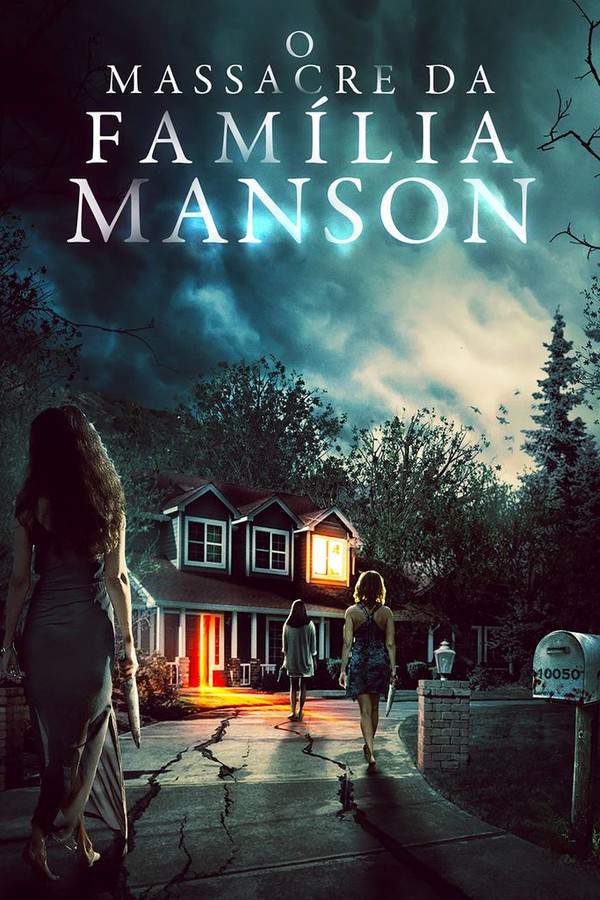
The Manson Family 2004
Directed by

Jim Van Bebber
Made by

Dinsdale Releasing
The Manson Family Plot Summary
Read the complete plot summary and ending explained for The Manson Family (2004). From turning points to emotional moments, uncover what really happened and why it matters.
In the scorching summer of 1969, filmmaker Jack Wilson, portrayed by Jack, turned his camera toward the disturbing realm of Charles “Charlie” Manson and his fervent devotees, collectively known as the Manson Family. Through a mix of candid interviews and shocking flashbacks, several ex-members of this enigmatic cult recounted their lives leading up to the notorious murder spree of August. The arrival of Tex Watson at the Spahn Ranch, which was once a film set and had transformed into a communal sanctuary, signaled the start of his sinister rise within the cult. Amidst a backdrop of excessive LSD consumption, marijuana-fueled merriment, and orgiastic escapades, Charlie’s struggles to secure a record deal for his folk music only deepened the Family’s alienation from mainstream society.
As the male members, including Tex and Bobby Beausoleil, pursued Simi, a gullible young woman, they enticed her into a shared LSD experience. This overwhelming haze led to a horrific gang rape, instigated by Charlie. Subsequently, the Family engaged in a series of random burglaries throughout Los Angeles, robbing homes as their unsuspecting victims slept nearby.
When a drug deal went awry, Charlie’s fury erupted in the senseless murder of Lotsapoppa, an African American drug dealer he suspected of ties with the Black Panthers. The group’s depraved rituals took an even darker twist with the horrifying sacrifice of a puppy. In the ensuing chaos, Tex confided in Patricia Krenwinkel and others about his fears of Charlie’s vengeance, expressing a desperate desire to escape the toxic environment.
Meanwhile, Bobby and Susan Atkins confronted music teacher Gary Hinman at his residence, plotting to steal what they believed to be his wealth. When their plan derailed, they held him captive for two days until Charlie arrived, viciously cutting off Gary’s ear. As Charlie left, Susan attempted to care for Gary’s wounds; however, Bobby’s and Susan’s indecision during the robbery led to a gruesome act: Bobby plunged a knife into Gary’s chest, then he and Susan suffocated his lifeless body with a cushion. In a grotesque act, Susan inscribed the phrase “political piggy” on the wall using Gary’s blood before they made their escape. A few days later, Bobby’s capture while trying to flee foreshadowed the Manson Family’s impending notoriety.
As per Charlie’s ominous directives, Tex, Susan, Patricia Krenwinkel, and Linda Kasabian embarked on a fateful mission to Los Angeles, armed only with knives. Guided by their enigmatic leader, they descended upon Cielo Drive, where they callously murdered Steven Parent, who happened to be parked just outside the gate. With chilling efficiency, the group invaded the home, binding the residents—Sharon Tate, Jay Sebring, Abigail Folger, and Voytek Frykowski—in a grotesque manifestation of captivity.
As the harrowing night unfolded, Tex unleashed a torrent of terror upon the helpless victims. Jay Sebring was swiftly executed with Tex’s gun before he became just another lifeless pile on the floor. Voytek Frykowski’s ill-fated attempt to escape ended in a brutal onslaught of gunfire and savage blows from the unyielding Tex, while Linda Kasabian stood frozen in horror.
Meanwhile, Susan succumbed to a frenzy of violence, targeting Abigail Folger in the kitchen with calculated ferocity. The horrifying attack reached its climax as she slashed Abigail’s throat, leaving her to stagger into the night, only to crumple on the lawn like a broken doll. The pregnant Sharon Tate soon became the focus of Tex’s next atrocity, as he mercilessly butchered her in the living room.
The following night, the quartet—now joined by Leslie Van Houten and Steve Grogan—deployed their brutality on Leno and Rosemary LaBianca, executing them without remorse in the sanctuary of their own home. Two weeks later, driven by paranoia, Charlie ordered the cold-blooded elimination of Donald Shea, fearing this innocent man possessed knowledge that could unravel their criminal web.
As the Manson Family’s reign of terror drew to a close, its members faced justice for the abhorrent crimes they committed. From their prison cells, Charlie orchestrated a continued cult following among disillusioned youth, championing his warped ideology in glib proclamations to the media. Yet, even as this dark era faded, its harrowing legacy continued to haunt society, forever carved into the collective memory like a grotesque mark.
In a horrifying reflection of these events, a group of youths, their minds warped by the Manson Family’s malevolent influence, brutally murdered Wilson in an appalling act of violence, mimicking the very horror that had once unfolded.
The Manson Family Timeline
Follow the complete movie timeline of The Manson Family (2004) with every major event in chronological order. Great for understanding complex plots and story progression.
Jack Begins Filming
In the summer of 1969, filmmaker Jack Wilson turns his camera toward the infamous Charles Manson and the Manson Family. His aim is to uncover the disturbing reality of the cult through interviews and flashbacks.
Tex Watson Joins the Family
The arrival of Tex Watson at the Spahn Ranch marks a significant turning point for the Manson Family. Once a film set, the ranch had evolved into a commune fueled by drugs and dubious escapades.
LSD Experience and Assault
Tex and other male members of the Manson Family lure Simi into a drug-fueled experience, leading to a horrific gang rape instigated by Charlie. This incident serves as a reflection of the group's increasing depravity.
Burglary Spree
The Manson Family embarks on a series of random burglaries throughout Los Angeles, robbing homes while their unsuspecting victims sleep. This demonstrates the cult's descent into criminality as their disconnect from society deepens.
Murder of Lotsapoppa
After a drug deal goes awry, Charlie's erupted fury leads to the senseless murder of Lotsapoppa, a drug dealer he suspected of ties with the Black Panthers. This act further solidifies the family's violent reputation.
Gary Hinman's Captivity
Bobby and Susan confront music teacher Gary Hinman with plans to steal his perceived wealth. Their abduction spirals into two days of captivity, culminating in violent acts at the hands of Charlie.
Murder of Gary Hinman
As tensions rise during the botched robbery, Charlie arrives and viciously cuts off Gary's ear. In a gruesome turn of events, Bobby plunges a knife into Gary's chest, leading to his execution.
Cielo Drive Murders
Following Charlie's orders, Tex, Susan, Patricia, and Linda invade Cielo Drive. They murder Steven Parent, followed by a brutal assault on Sharon Tate and her guests, solidifying the family's infamy.
Brutality at Cielo Drive
The night of terror unfolds as Tex takes the lead in executing Jay Sebring and violently attacking Voytek Frykowski while Susan targets Abigail Folger. The chaos culminates in the horrific murder of the pregnant Sharon Tate.
LaBianca Murders
The Manson Family continues their rampage by brutally murdering Leno and Rosemary LaBianca in their home. This act is another chilling example of their merciless reign of terror.
Elimination of Donald Shea
Fueled by paranoia, Charlie orders the murder of Donald Shea, fearing he might expose the group's criminal activities. This decision showcases Charlie's increasingly erratic behavior and sense of betrayal.
Arrest and Justice
As the Manson Family's reign of terror draws to a close, members are arrested and brought to justice for their heinous acts. The trials and revelations grip the nation, casting a large shadow over society.
Charlie's Continued Influence
Despite being imprisoned, Charlie manages to retain a cult following among disillusioned youths. His manipulative ideology finds new life in the media, revealing the lingering effects of his horrific actions.
Legacy of Violence
Even as this dark chapter in history fades, the legacy of the Manson Family continues to haunt society. Their actions leave an indelible mark on the cultural consciousness and alter perceptions of crime and cults.
Murder of Jack Wilson
In a chilling twist, a group of youths influenced by the Manson Family brutally murder Jack Wilson, mimicking the very horrors he sought to document. This act is a horrifying reflection of the cult's enduring malevolence.
The Manson Family Characters
Explore all characters from The Manson Family (2004). Get detailed profiles with their roles, arcs, and key relationships explained.
Charles Manson
Manson is portrayed as the charismatic but manipulative leader of the Manson Family. His vision of a utopian community turns into a nightmare as he incites his followers to commit horrific crimes. Manson embodies the toxic influence of cult leaders who exploit vulnerable individuals for their agenda.
Tex Watson
As a key member of the Manson Family, Tex is shown as both a devoted follower and a perpetrator of violence. His initial allure is overshadowed by his descent into brutality as he executes the group’s grisly orders. Tex's character illustrates the transformation from a carefree youth to a cold-blooded killer.
Susan Atkins
Atkins is depicted as an eager participant in the violent acts of the Manson Family. Her character reflects the psychological manipulation within the group, showcasing how she becomes desensitized to brutality. She embodies the chilling effects of indoctrination on young minds.
The Manson Family Settings
Learn where and when The Manson Family (2004) takes place. Explore the film’s settings, era, and how they shape the narrative.
Time period
1969
The summer of 1969 was a pivotal moment in American history, marked by cultural upheaval, the counter-culture movement, and the infamous Woodstock festival. It was a time when society was grappling with issues of freedom, drug use, and the disillusionment of youth. This year also bore witness to one of the most notorious crime sprees in American history, as the Manson Family terrorized Los Angeles.
Location
Spahn Ranch, Los Angeles, Cielo Drive
Spahn Ranch was initially a film set that later became a commune for the Manson Family. Located in the outskirts of Los Angeles, it provided a retreat for those seeking a counter-culture lifestyle. Cielo Drive, a residential area in Los Angeles, became infamous for the brutal murders committed by the Manson Family, forever marking it in the city's dark history.
The Manson Family Themes
Discover the main themes in The Manson Family (2004). Analyze the deeper meanings, emotional layers, and social commentary behind the film.
🔪
Violence
The film explores the theme of extreme violence through the heinous actions of the Manson Family. Their descent into brutality illustrates how ideology can lead to horrific outcomes. The juxtaposition of peace and violence captures the chaotic spirit of the era, reflecting the potential darkness beneath the surface of the counter-culture.
🌿
Cult Influence
Cult dynamics are portrayed vividly, showcasing the manipulation and control exercised by Charles Manson over his followers. The disturbing allure of belonging drives individuals to commit unspeakable acts, highlighting how easy it is to lose one's identity within a toxic community. This theme raises questions about autonomy and the susceptibility of youth to charismatic leaders.
💊
Drug Culture
The rampant drug use during this time, especially LSD and marijuana, is a significant theme in the narrative. It underlines how substances can distort reality and lead to moral decay. The film presents this as a driving factor behind the group's heinous acts, ultimately showcasing the darker side of the 1960s’ experimentation with drugs.
The Manson Family Spoiler-Free Summary
Discover the spoiler-free summary of The Manson Family (2004). Get a concise overview without any spoilers.
In the sweltering heat of a late‑summer night, Ellie—a weary guitarist haunted by stalled ambitions—finds a last‑minute lease on a sprawling, decaying mansion perched on the outskirts of a quiet town. The house, once a bustling estate, now bears the weight of cracked plaster, sagging stairways, and a silence that seems to echo with the whispers of former occupants. As she drifts through rooms lit by trembling candles, the sheer scale of the place both promises a sanctuary to create and an oppressive cage that threatens to swallow her fragile hopes.
The mansion’s reputation is a lingering murmur among locals, a tale of tragedy and restless spirits that have long been dismissed as folklore. Yet the very walls exude a palpable tension, an ever‑present sense that something watches from the shadows. Ellie’s nights become a collage of muffled sounds, fleeting silhouettes, and unsettling visions that bleed into her waking hours, turning melodies into dissonant chords that reverberate with an almost tangible dread. The atmosphere hangs heavy with an oily mix of nostalgia and foreboding, making the line between her music and the house’s dark legacy increasingly indistinct.
As she attempts to rebuild her life and find inspiration within the mansion’s crumbling grandeur, Ellie must navigate a growing internal darkness that mirrors the foreboding corridors she roams. The film weaves a slow‑burning tension, letting the oppressive ambience and her spiraling perception of reality draw the audience deeper into a world where every creak may be a warning and every fleeting hallucination feels like a beckoning call. The story thrives on mood and mystery, promising a psychological journey that teeters on the edge of sanity without ever revealing the full extent of the shadows that lie within.
Can’t find your movie? Request a summary here.
Featured on this page

What's After the Movie?
Not sure whether to stay after the credits? Find out!
Explore Our Movie Platform
New Movie Releases (2025)
Famous Movie Actors
Top Film Production Studios
Movie Plot Summaries & Endings
Major Movie Awards & Winners
Best Concert Films & Music Documentaries
Movie Collections and Curated Lists
© 2025 What's After the Movie. All rights reserved.




